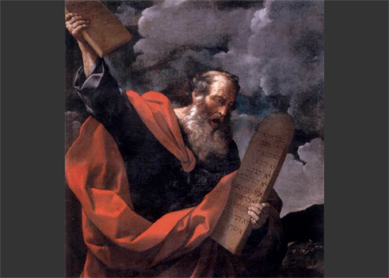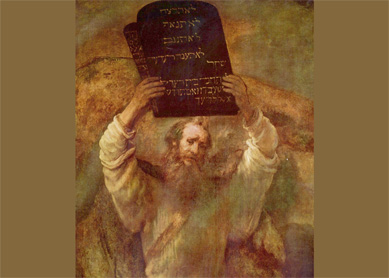The exodus—the story of the Israelites’ deliverance from oppression in the land of Egypt—is retold in the Hebrew Bible and in the New Testament. Scholars call such recurrences of the story’s themes and language outside of the book of Exodus “the exodus tradition.” This tradition is found especially in Deuteronomy, in the historical books, in the Prophets, and as a paradigm for the salvation announced in the New Testament. The figure of Moses as the leader of the exodus and the source of divine law appears not only in Exodus and Deuteronomy but also in the latest books of the Hebrew canon, such as Chronicles, Ezra, Nehemiah, and Daniel.
Markers of the exodus tradition include well-known names, words, phrases, and motifs that run through the books of the Bible, as at the beginning of the Ten Commandments: “I am the Lord your God, who brought you out of the land of Egypt, out of the house of slavery” (
The prophets (for example, Jeremiah, Ezekiel, and Hosea) frequently cite the divine redemption of the exodus to rebuke Israel for being faithless and ungrateful but also to encourage Israel during the exile with a promise of deliverance even greater than the exodus (
Retellings and allusions to the exodus tradition continue in the New Testament, as in
The prevalence of the exodus tradition in the Bible demonstrates its importance as a foundational collective memory from ancient Israel that predates the monarchy and survives into the time of the early rabbis and followers of Jesus. Postbiblical exodus traditions take many forms, from the Jewish observance of Passover to Christian celebrations of Easter, Muslim teachings about the Prophet Musa, and modern liberation theologies. Though many modern readers have asked whether episodes of the exodus, from the plagues in Egypt to the parting of the Red Sea, “really happened,” the exodus remains one of the most powerful narratives of divine compassion and liberation found in the Bible.
Bibliography
- Childs, Brevard. Exodus: A Critical, Theological Commentary. Louisville: Westminster Press, 1974.
- Loewenstamm, Samuel E. The Evolution of the Exodus Tradition. Translated by Baruch J. Schwartz. Winona Lake, Ind.: Eisenbrauns, 1992.
- Dozeman, Thomas B. God at War: Power in the Exodus Tradition. New York: Oxford University Press, 1996.
- Assmann, Jan. Moses the Egyptian: The Memory of Egypt in Western Monotheism. Cambridge, Mass.: Harvard University Press, 1997.





